Chocolate Company Beyond Good Lives Up to Its Name
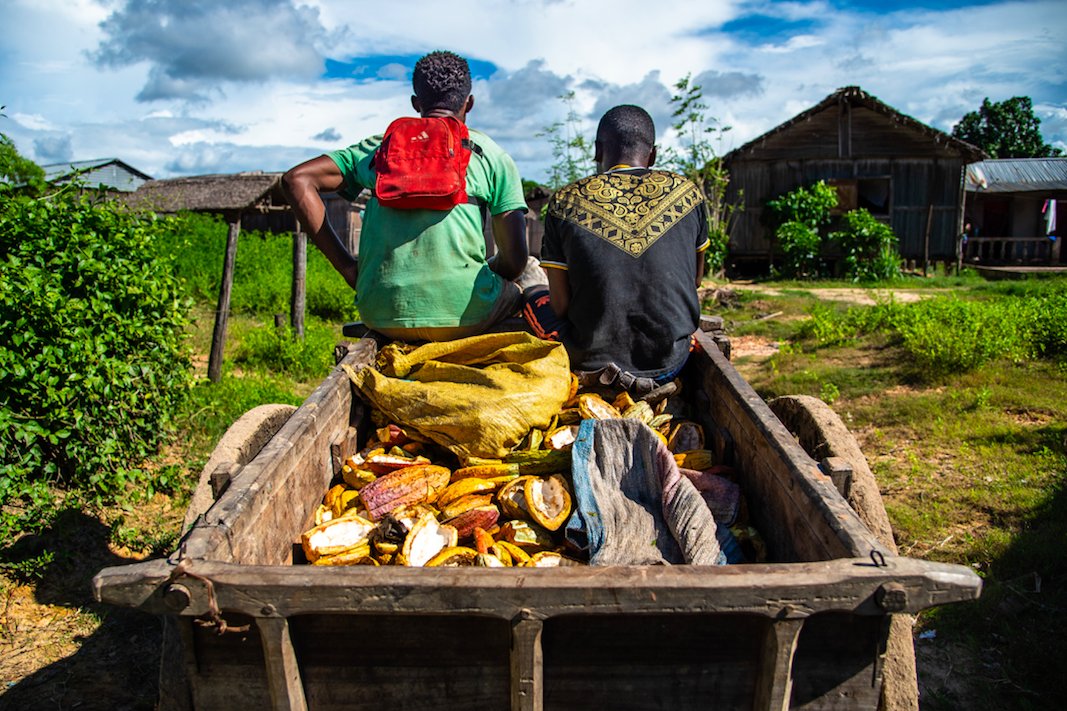
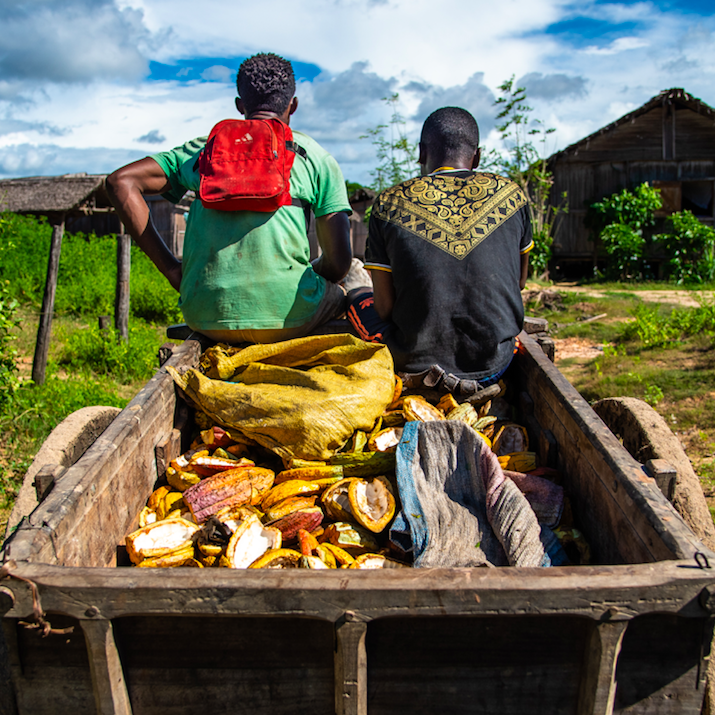
If Madagascar-based Beyond Good’s founder Tim McCollum’s life were one of those “based on a true story” films, the director had better open the first scene like this (assuming these types of films take creative liberties):
“A driver whips quickly yet slyly around a bend at the port, looking to surprise the team he’s been working with for the past several years. He spots them, pulls close to the curb and unwinds his hand-crank window while giving a toothy smile to the unsuspecting group he’s picking up. Tim, the group leader, inches closer, not believing his eyes. He dramatically takes off his sunglasses to confirm what he sees. It’s true. One of his smallholder farmers has his very own truck. And they’re about to go for a ride.”
It hasn’t all been toothy smiles and pickup trucks — the journey to building a sustainable, transparent, profitable chocolate company in one of the poorest countries in the world has been as bumpy as the 435-mile (700-kilometer) road that connects the smallholder cocoa farms to the factory based in Madagascar’s capital, Antananarivo.

Beyond Good started in 2008 with a simple mission: Manufacture chocolate at the origin. Traditionally, the life of a cocoa pod farmed in Madagascar is exhausting, moving from farmer to middleman to another middleman (and maybe even another middleman or two) to an exporter to a foreign factory. This cycle is especially true in cocoa-rich West African countries like Ghana and Cote d’Ivoire, where cocoa is commoditized en masse, tainting its identity and richness in the process.
McCollum’s company sought to disrupt this supply chain. Cutting out the upwards of five middlemen and establishing an in-country chocolate making factory, he thought, was the recipe for success (pun intended). Not only would it improve the quality and transparency of chocolate since the cocoa could be easily traced back to a specific grower, but it crucially put more money into the pockets of the farmers. No middlemen meant no shaving money off at each stage of the supply chain.
And withstanding growing pains from Madagascar’s poor infrastructure and well-placed hesitation from farmers, Beyond Good’s model worked. By the company’s calculation, its farmers earn $3.84 a day, five to six times that of their West African counterparts, and nearly triple Madagascar’s GDP per capita.
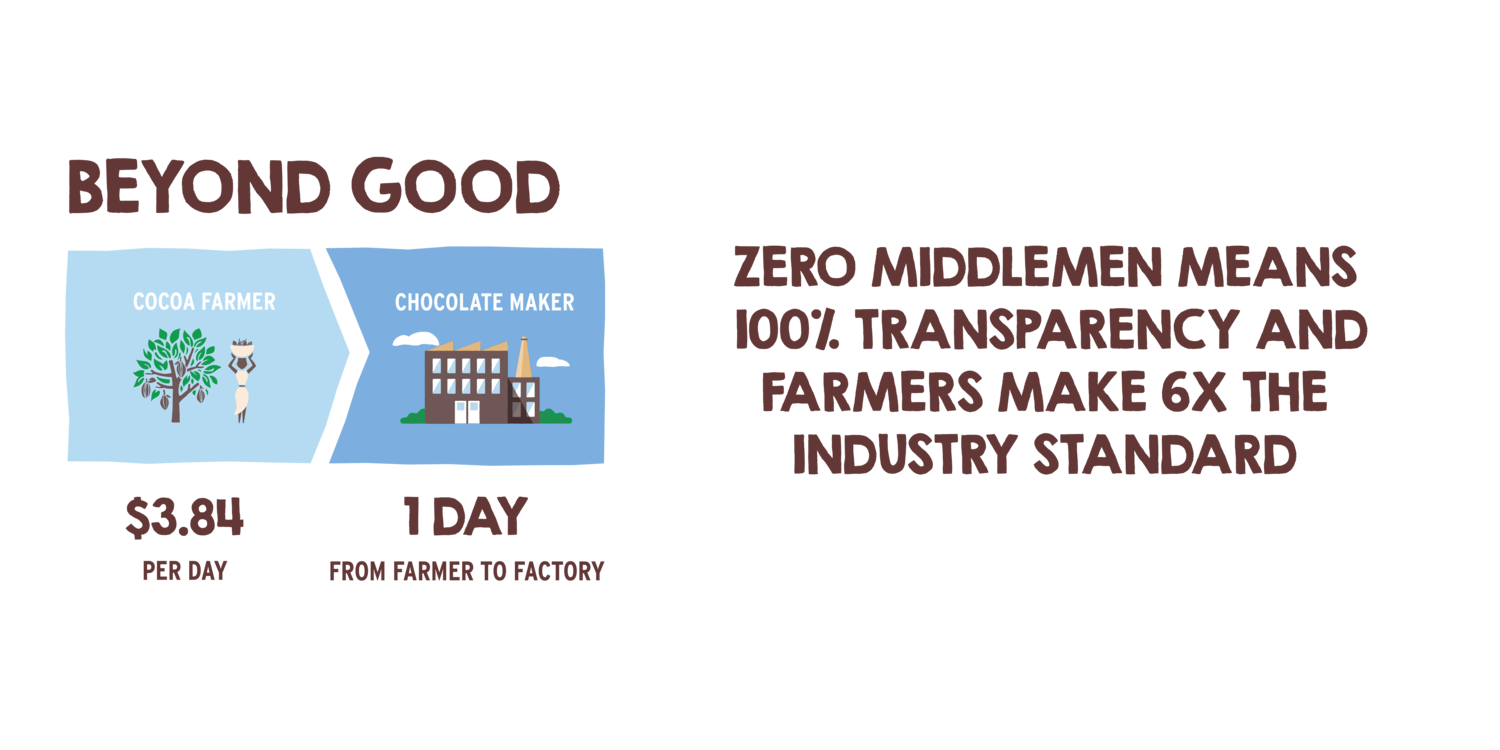
“It took five years to get to a point where we would walk into a village and a farmer would trust us,” McCollum told TriplePundit, also noting his Peace Corps experience in Madagascar contributed to breaking down those walls. “The turning point was when it started to work. Farmers could tie their increase in standard of living to what they had done themselves, which was farm better cocoa and get paid more money for it. That’s when it takes off like wildfire in a community.”
Word of mouth travels quickly in a small village, especially when your neighbor buys a truck from the profits he’s made as a farmer. Beyond Good now has 93 farmers, though that number is climbing and expected to reach 120 by the end of March of next year. That’s in addition to the 50 chocolate makers it employs in its factory in Madagascar’s capital Antananarivo. In 2021, McCollum expects the company to churn out between 3 million to 4 million chocolate bars — three-quarters of which are made at its Madagascar-based factory while the others are produced at a factory in Italy to diversify risk and meet growing production numbers. Sales, meanwhile, are driven almost exclusively through the United States, at markets like Whole Foods, Sprouts, and online on Beyond Good’s website and Amazon.
The goodness of Beyond Good lies also in its less-intended consequences. Deforestation due to cocoa production is a major black mark on the chocolate industry, especially in West Africa where two-thirds of the world’s cocoa originates. For example, Mars Inc., one of the world’s most recognizable chocolate makers, fell short on a 2009 pledge to entirely end deforestation from its business within 10 years. In the last 50 years, Cote d’Ivoire has lost an estimated 80 percent of its forest, some of which can be traced to farmers cutting down large swathes of protected forests to expand their plots.
“Anytime someone bites on a chocolate bar in the United States, a tree is being cut down,” Eric Agnero, an environmental activist from Ivory Coast, told the Washington Post in 2019.
Beyond Good farmers have taken the opposite approach: agroforestry and reforestation. Instead of chopping down forests to pave the way for additional plot land, the farmers have been converting rice lands into new shaded areas where cocoa pods sprout alongside banana, jackfruit and citrus trees. The result is a beautiful canopy, a sustainable crop and a home for a lemur population that has borne the brunt of Madagascar’s disappearing forests. Beyond Good commissioned the England-based Bristol Zoological Society to study lemur conservation in and around the canopies where their farmers harvest cocoa. Six months of studying night cameras, camping under the shade trees, and recording intensive interviews with the farmers confirmed five or six lemur species living among the canopy.
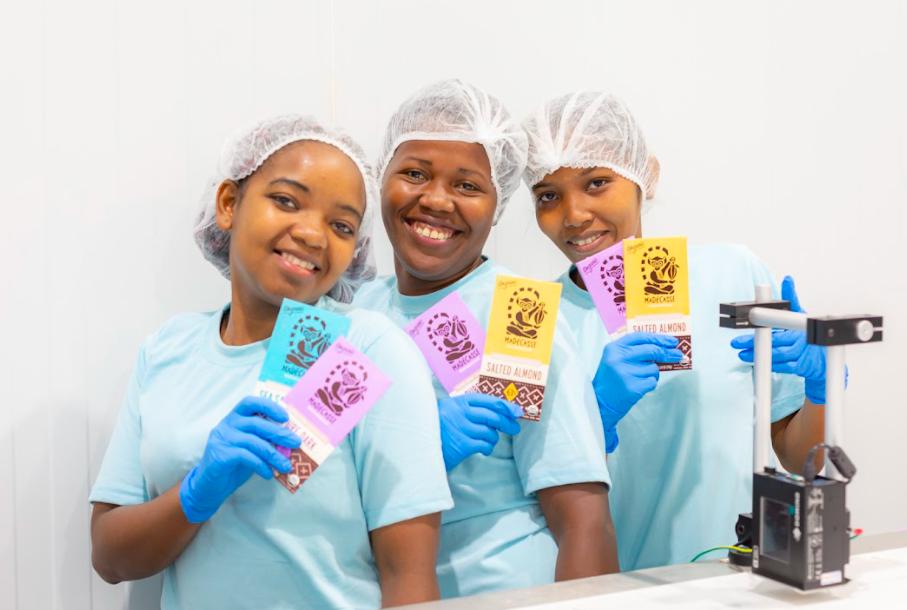
“We never asked a single farmer to plant a tree,” McCollum said. “The incentives with our partnership were so good that they did it on their own. We were excited to start doing this in a corner of the country where it was baked into our business, which is much more sustainable than a one-off project. It’s happening naturally because people are incentivized to do it on their own.”
Child labor has also marred the chocolate industry. Despite two decades of promising to eradicate child labor from its supply chain, critics of chocolate giants such as Hershey, Nestlé and Mars say the companies continue to turn a blind eye from who is doing the heavy lifting. Lack of transparency drives this problem. As the Washington Post’s Peter Whoriskey and Rachel Siegel exposed child labor in the cocoa industry of West Africa, they also concluded that Mars could trace only 24 percent of its cocoa back to farms. Hershey and Nestlé were also unable to trace the majority of their cocoa to its source. Even if the companies’ intentions to end child labor are genuine, the lack of visibility into where their supply is coming from makes it impossible to guarantee that children are kept on the sidelines and prevented from working on these farms
Beyond Good, on the other hand, has full transparency into where its cocoa is coming from. As a result, the company says that to date it has not experienced any instances of child labor.

McCollum is convinced that this business model isn’t limited to the confines of the east African island country. His confidence will be put to the test soon as Beyond Good expands its operations to Uganda, with its eyes set on opening a factory (or two or three) in 2022.
Business model aside, McCollum also credits Beyond Good’s success to the genetics of the cocoa in Madagascar, which he says “tastes different and has more flavor” than cocoa found anywhere else in the world.
“It’s important from a sustainability point of view because since it’s a higher quality cocoa, we can pay farmers a lot more for it,” McCollum said. “The road through sustainability as it relates to farmer poverty goes through better quality cocoa.”
Image credits: Beyond Good
Floating Offshore Wind Power: America’s Secret Weapon in the Global Decarbonization Race
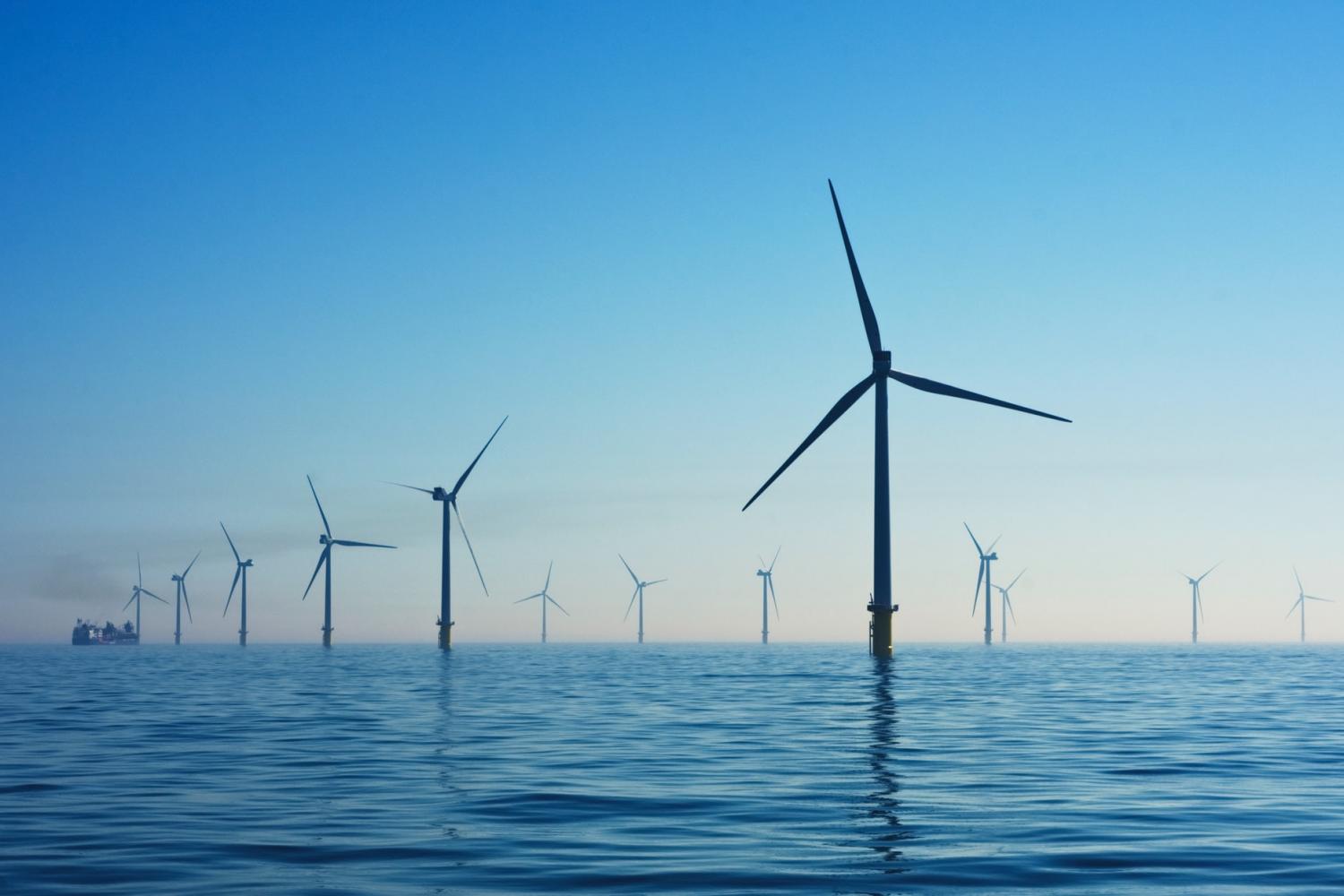
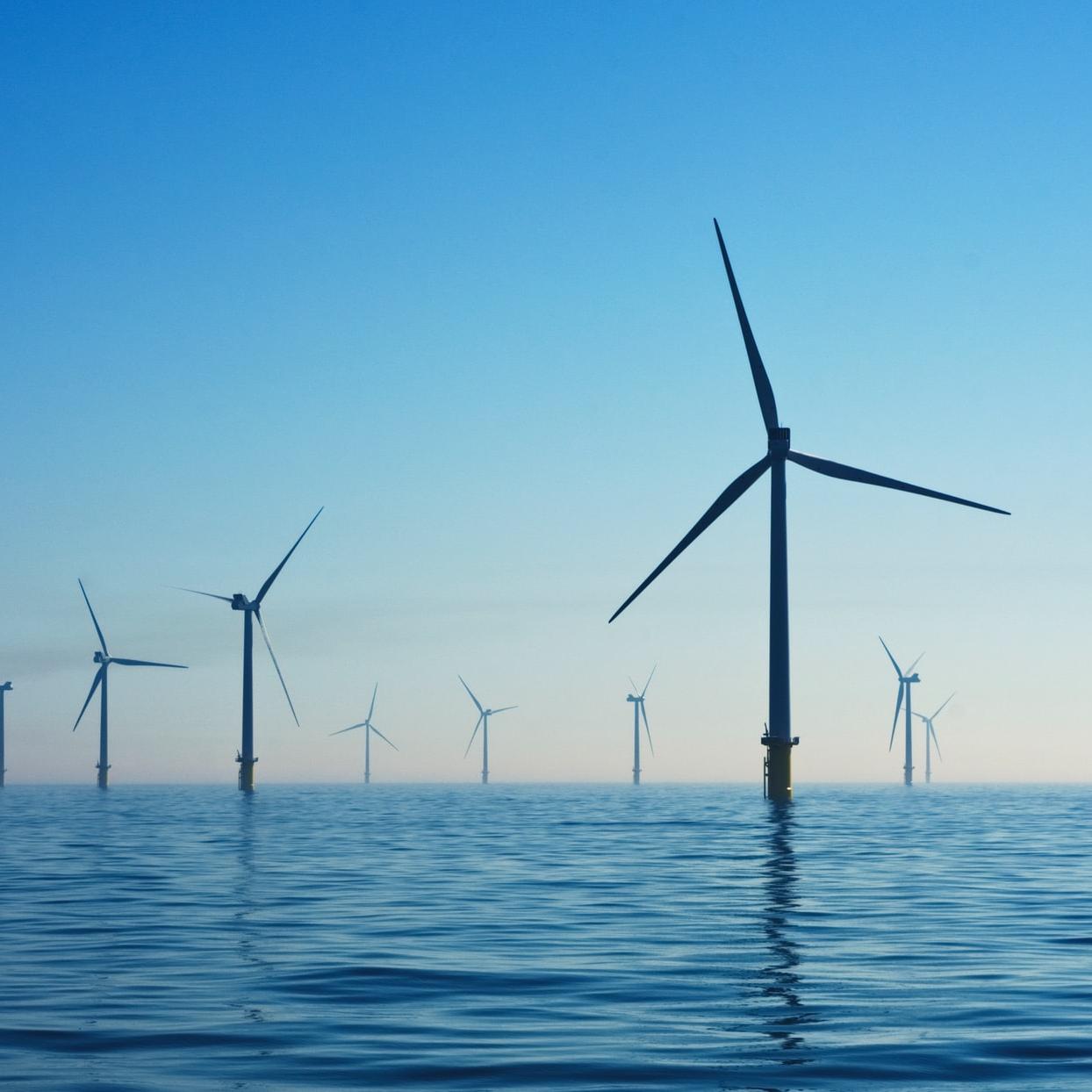
The latest IPCC report on climate change paints a frightening picture, but it also indicates there is time for rapid decarbonization to make a difference. For the U.S., that means tapping into massive new energy resources that have been dormant all these years. Floating offshore wind power is one of those areas, and it finally appears to be rousing from its slumber.
U.S. offshore wind power has barely budged in years
At first glance, any kind of offshore wind power in the U.S. would appear to be a non-starter. Even though conditions for offshore wind development are ideal along most of the Atlantic coast, the U.S. has lagged far behind the U.K., the Netherlands and other nations.
The offshore wind market began accelerating elsewhere around the globe during the Barack Obama administration. Unfortunately, federal efforts to coordinate Atlantic coast wind developmen in the U.S. were stymied by legislators and governors in several Atlantic coast states, reportedly linked to the influence of the Koch family. A Koch family member was also instrumental in delaying the proposed Cape Wind project in Massachusetts, which would have been the nation’s first offshore wind farm.
Cape Wind was eventually abandoned and so was another early project, Fisherman’s Energy in New Jersey. The only one to survive the early years was the Block Island Wind Farm in Rhode Island.
Block Island is still the nation’s only commercial offshore wind farm in operation. With five turbines and 30 megawatts of capacity, it pales in comparison to other projects around the world, like the 174-turbine, 1.2-gigawatt Hornsea wind farm in the North Sea. The first 50 Hornsea turbines went into operation in 2019.
Another North Sea project, the three-phase Dogger Bank wind farm, will have a capacity of 3.6 gigawatts when fully built out.
A secret weapon in the offshore wind power race
The U.S. appears to have been sleepwalking through all this activity, but appearances can be deceptive.
One key step occurred during the George W. Bush administration when Congress passed the Energy Policy Act of 2005. The new law established the Outer Continental Shelf Renewable Energy Program, which laid the groundwork for coordinating the lease of federal offshore areas. The Interior Department’s Bureau of Ocean Energy Management (BOEM) finalized the leasing process in 2009.
Republican office holders tied the Obama administration’s hands for the eight years following 2009, but oddly enough, the Donald Trump administration helped to free the logjam. Despite that former president’s well-known distaste for wind turbines, BOEM continued to lease out federal wind areas at a rapid pace all through his first and only term in office.
By the time President Joe Biden was inaugurated, the stage was set for a surge of activity along the Atlantic coast.
NBC-TV recently ran the numbers and counted 17 different offshore wind farms in the Atlantic coast pipeline, totaling 1,500 wind turbines.
All of these wind farms have a secret weapon up their sleeves. Today’s wind turbines are more powerful and efficient than the technology of just a few years ago, helping to drive down the cost of offshore wind power. Streamlined construction methods and a maturing supply chain also put today’s offshore wind projects a cost advantage over those built in earlier years.
The International Renewable Energy Agency (IRENA) notes that offshore wind is still relatively expensive compared to onshore projects, but costs have been declining rapidly since 2014 and further significant declines are anticipated.
Floating offshore wind, the other secret weapon
So far, U.S. offshore wind activity has clustered only along the Atlantic coast, where relatively shallow water enables the construction of conventional, fixed-platform wind turbines.
For deeper and more challenging waters, floating wind turbine platforms are needed. Floating wind technology is relatively new, but it is already emerging in the commercial market and investors are already targeting the U.S.
As with Atlantic offshore wind development, overseas investors are driving the U.S. floating wind turbine market. That is the unfortunate payoff for years of obstruction and uncertainty fostered primarily by Republican office holders. It is also somewhat ironic, considering that the U.S. Department of Energy has been an early supporter of efforts to improve floating wind turbine technology.
Still, overseas investors can stimulate significant local economic activity in the U.S. The National Renewable Energy Laboratory ran the numbers in June, and calculated $12 billion annually in U.S. capital investment will occur in future years as the result of offshore wind development.
Ireland’s Simply Blue Group is among those targeting the U.S. for investment. Altogether, the firm already has a pipeline of 9 gigawatts in floating offshore turbine projects under its belt. Now it is eyeing the U.S. floating offshore wind market, which it calculates at 30 gigawatts.
Much of the opportunity lies along the Pacific coast, with other areas including parts of the Atlantic Coast and the Great Lakes.
Simply Blue notes that 80 percent of the U.S. population lives in coastal communities. Land for both solar and wind farms is limited in these areas, making offshore wind development all the more imperative. Offshore wind resources can also help alleviate the need for major new transmission lines onshore. Floating wind turbines offer the additional advantage of remote sites that reduce or eliminate visual clutter from the shoreline.
Although floating offshore wind technology is currently more expensive than fixed-platform technology, costs are already coming down and further declines are anticipated.
As for the climate crisis, the U.S. Department of Energy estimates that an overall total of 2,000 gigawatts in offshore wind power capacity are within reach in domestic waters by today’s technology. That is approximately twice the nation’s current electricity usage, meaning there is ample room for electrifying vehicles, buildings, and factories.
The means of decarbonizing the U.S. economy are already at hand. The only missing element is the political will to make the transition from fossil fuels to clean power as quickly as possible.
Up to now most of all the heavy lifting on climate action has been done by Democrats in office. A shift in the political winds is long overdue, but with the economic consequences of inaction already looming into view, the time is now for swift, unified action by all legislators in Congress and in statehouses across the country.
Image credit: Nicholas Doherty/Unsplash
Progressive Finance’s Role in Generating Renewables for All


Money is the lifeblood of the economy. Where money flows, economic muscle grows. Money, like energy, is essential to human survival on this planet. No nation knows this as well as the United States, especially considering 2020’s $21 trillion in gross domestic product.
Moreover, concluded in the latest IPCC report on climate change, the survival of the human race is in dire jeopardy, especially as the world continues to run the biggest atmospheric “doping” scandal of all time. In the midst of this pickle, the report provides a glimmer of hope: “The science is clear that if emissions are slashed then temperatures will stop rising in a decade or two and the increases in deadly extreme events will be strongly limited,” writes the report’s authors.
The United States, with about 4 percent of the world’s population, has consistently consumed 25 percent of the world’s energy. As of 2020, merely 12 percent of total U.S. energy consumption stemmed from renewable energy sources; that explains the annual whopping 6.6 million metric tons of carbon dioxide equivalent (CO2e) emissions.
Clearly, more than ever, it is the imperative of the U.S. to rapidly deploy renewables in the race to a zero-emission economy. Can U.S. investors and consumers flex their money muscles to help save the world?
A quick intro to progressive finance
Progressive finance, as defined by Keith Mestrich and Mark Pinsky, relies on a balance of public and private gains based on public and private risk sharing. This contrasts conservative finance as it aims to leverage private gains off public risk sharing. Progressive finance is a path that can result in a positive impact on investors; consumers alike could follow to ensure an equitable and inclusive transition to renewables. As the authors’ write, “The ways we choose to organize money tells others about us. And we learn about ourselves.”
Investors and consumers have the potential to make the renewable transition a just one, but there will be a long road ahead.
Closing the financial and renewables doors on communities of color
Over the past decade large U.S. banks have fled from rural as well as low- and moderate-income (LMI) communities. Local residents are left to deal with this blow as these closings mean sharp declines in local business lending.
The act of closing the doors on rural and LMI communities is a trend that is also reflected within the growing U.S. solar market. When renewable power investments are left in the hands of a few large institutional investors, solar “redlining” begins to occur. Solar redlining occurs when community-based projects are overlooked for utility-scale projects. This trend excludes the majority of U.S. communities, especially communities of color. A renewable power system of “haves” and “have nots” is boiling to a head, further dividing the nation with racial and economic lines.
An equitable approach to the energy transition
Provided federal tax incentives, well-paid organizations and individuals benefit tremendously from investing in solar projects. Coupling a dollar for dollar tax credit and accelerated depreciation deductions, taxpayers are capable of investing in a revenue generating (solar) asset with nearly 50 percent of their investment earned back in year one. This is such a sweet deal that only few banks, corporations and individuals can take advantage of. However, these incentives are leading to exclusive projects often found in, predictably, exclusive neighborhoods. How can the majority of individuals contribute and benefit to an energy grid powered by renewables? For starters, investors and consumers can look towards community solar.
Spreading the financial and environmental benefits: community solar
Over the past few years across the U.S., community solar has started to thrive. These projects energize the homes of many, from renters to small business owners to farmers. Customers who participate in these programs earn credits on their utility bills, all the while supporting the production of renewables. Community solar is an innovative practice that brings energy savings and paves the way for a just energy transition while including those who may not have the capabilities to install solar panels on their respective rooftops. For LMI residents, even the slightest of energy savings go a long way. The reality is, many residents are unaware of the savings and whether or not they qualify. Click here to find out.
Through community solar, corporations, community banks and high-net worth individuals can help invest in underserved neighborhoods. Starbucks, for example, announced the completion of a multi-year community solar plan in New York State, generating up to 90 megawatts of capacity. Starbucks announced, “The projects are expected to supply solar energy for local Starbucks stores and up to 24,000 households, small businesses, nonprofits, churches, universities and stores in multiple geographies.
Leveraging the financial tools, regulations, and wallets can help grow a resilient and equitable energy market across the entire country. Wealthy or not, there are ways to contribute. Community development financial institutions (CDFI’s) harness individuals’ savings and help to revive economic life into underserved communities. City First Broadway, a black owned CDFI that serves five states, does just that.
As already mentioned, high-income earners, corporations and banks of all kinds can take advantage of federal incentives while receiving steady flows of cash over-time. Now, with new innovative business models, all communities can benefit in the process. Sunwealth, a clean-energy investment firm, is one example for a company that provides the opportunity to profit off of clean energy projects while generating meaningful returns for communities. Partnerships between the government, investors, businesses, and community members can result in projects like the 1.8 megawatts of rooftop solar installed in Queens, New York.
Inclusive investments are needed to help tackle climate change
Avoiding an exclusive energy transition that only benefits the few is one that behooves citizens to take action for a myriad of reasons. Think of this effect similar to a gym-rat who only hammers bicep curls; the muscles becomes lopsided. When investments in renewables flow to only a few parts of the economy, it is easy to see the effects of a poorly planned transition, especially one that overlooks he ordinary working class families. No matter the size of our wallet, we can all act accordingly as we prioritize our investments, savings and spending. If we do this with a long-term impact for everyone in mind; we’ll all be stronger in the end.
Image credit: Pixabay
Diversity Matters, As Nasdaq Tells Companies


As of early August, companies listing on Nasdaq are now subject to a new rule that requires public disclosure of the diversity within their boards. In addition, such companies need to have, or explain, why they do not include at least two “diverse” members. Nasdaq defines this as at least one female director and one that is an underrepresented minority or LGBTQ+. In addition, smaller companies, foreign issuers and companies with five or fewer directors have greater flexibility in meeting the diversity objectives and can have two women instead.
The SEC approved the new rule on August 6, and to be clear, Nasdaq’s rule does not actually mandate having a diverse board. Instead, it merely requires companies to disclose diversity indicators annually or else provide an explanation. By contrast, California’s legislature passed a law in 2018 (SB 826) requiring boards of publicly traded companies to have at least one female member or face a fee of $100,000.
Proponents of the new rule believe it will force boards to become more diverse and inclusive. The idea is that transparency bolsters accountability. Currently, more than 3,300 companies are listed on Nasdaq, and 12 percent don’t have any women on their boards. Likewise, more than a third lack a director who is a person of color. This reality persists despite the amount of research that makes an economic case that companies with diverse boards often perform better – and that was especially true during the pandemic.
“The data shows clear evidence that there’s a small-cap company gap when it comes to diversity on U.S. boards,” Marija Kramer, head of ISS Corporate Solutions, said in an interview. “Listed companies, if they aren’t already, should think about how they’re going to recruit for more diverse directors.”
The lack of diversity is not limited to the Nasdaq alone. For example, of the Russell 3000 corporate board members, only 4.1 percent were Black directors and 21 percent were women in 2019. Yet, 13.4 percent of the U.S. population is Black. Likewise, Latino and Asian Americans were not proportionately represented on boards.
Increasingly, pressure has been mounting to eliminate systemic racism and promote corporate diversity. In June 2020, Reddit’s co-founder and executive chairman of the board, Alexis Ohanian, stepped down and said, “I’ve resigned as a member of the Reddit board, [and] I have urged them to fill my seat with a Black candidate.” His seat was, in fact, filled by Michael Seibel, an African American entrepreneur.
According to a study in Harvard Business Review, a few hurdles need to be overcome to lower barriers to and within the boardroom. Often the pipeline of candidates to boards tends to be white male executives. Director recruitment on all-white boards tends to consider fewer candidates that are racial and ethnic minorities. Also, when considering how Black board members were initially introduced to the board when they were already known, it is more likely to be by a Black director (54 percent) than a white director (35 percent).
If the same concepts apply to other racial minorities, it means that boards that the lack of diversity is likely to stay that way unless something causes them to change course. The good news is that once some diversity is achieved, it is more likely to continue.
The study also found that Black directors were less likely to serve board leadership roles as a chairperson or committee chair than white members, despite having higher levels of education on average. This raises the concern that the contribution of some members can be ignored or undervalued. Thus, it is critical to have minority members serving on boards and that the boards are open to their contributions.
The big question about the new rule for Nasdaq-listed companies is if transparency alone will lead to positive change. The California law mandating that at least one woman serves on the board is both a mandate and comes with a $100,000 fine. The good news is that more women are now serving on the boards of publicly traded companies in California.
Will merely requiring transparency generate the same results? It certainly will serve as an incentive for many companies to attract more high-quality minority and female candidates. Although this step might not solve the issue for Nasdaq-listed companies that lack director diversity, it’s a definite step in the right direction towards a more inclusive business community.
Image credit: Pixabay
Bird Applies E-Scooter Sharing Lessons to Sales of E-Bikes
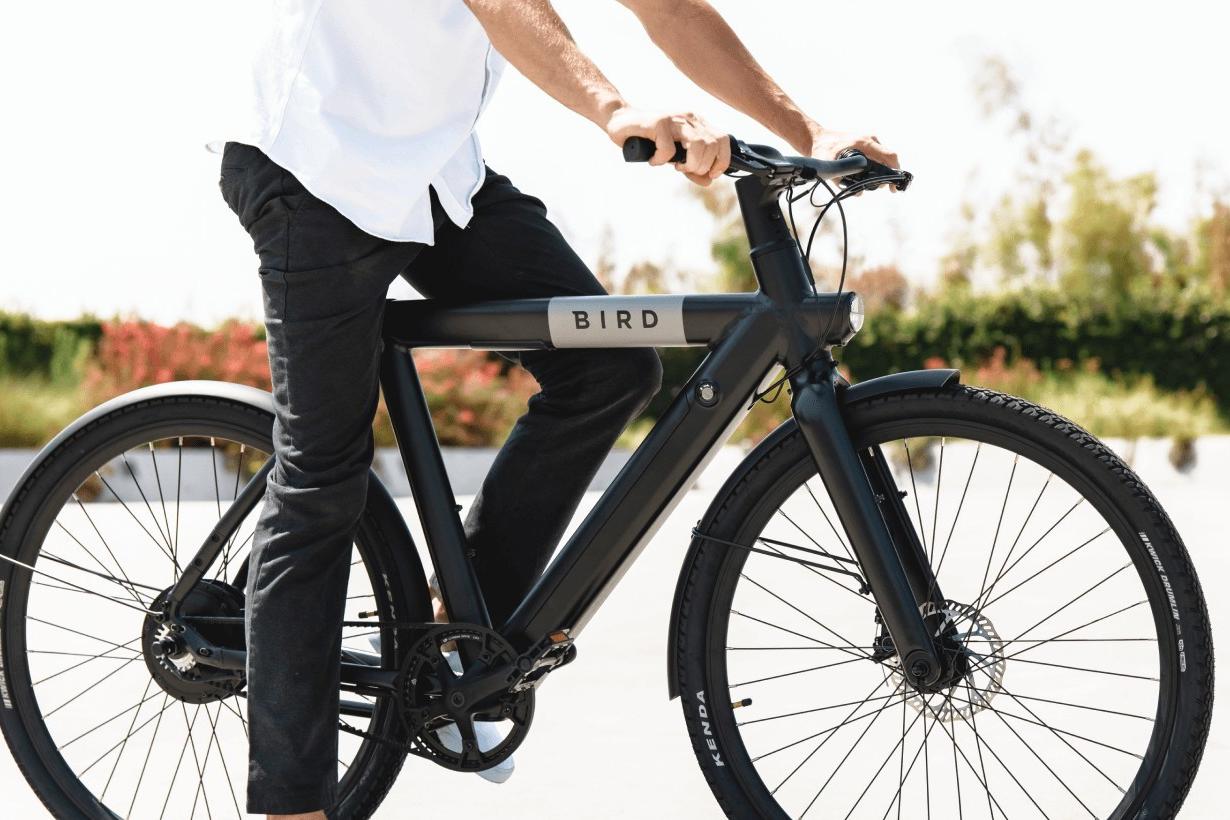
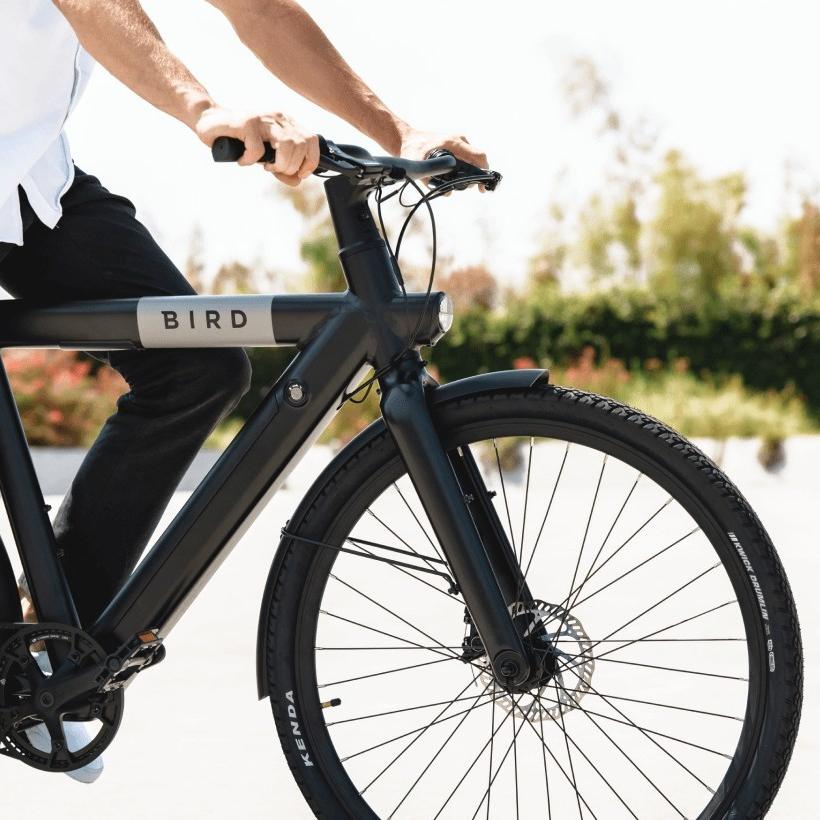
The craze over e-bikes has taken off like a rocket, and it shows no signs of stopping. That’s a good development in terms of cutting carbon emissions related to car travel. The problem for an e-bike maker is how to set itself apart from the competition, which is growing hotter practically by the day. The micro-mobility company Bird is betting that its experience in the e-scooter sharing area could make a key difference.
It started with an e-scooter sharing service…
The area of electric scooter and bike sharing is fraught with challenges. Nevertheless, California-based Bird and several other companies have persisted. Now Bird is determined to show that lessons learned in the e-scooter sharing sphere can translate into the sales of e-bikes.
Bird has more than 300 cities worldwide on its e-scooter sharing list, and it has already itself apart by focusing on safety, civic service and equity as well as cutting carbon emissions.
Earlier this month, for example, Bird joined with the micro-mobility firms Lime and Vero to launch the first e-scooter sharing service in New York City as a pilot project in the borough of the Bronx.
Bird prepared for the launch as early as three years ago, working with local alternative transportation groups in the Bronx and elsewhere to identify needs and service gaps. As a result, Bird is focusing on affordable access for local residents. A partnership with the company Scootaround will also enable Bird to improve access for riders with disabilities.
Bird also anticipates that a partnership with The Fortune Society will help achieve local hiring goals, including programs aimed at job seekers impacted by the criminal justice system.
As for safety, Bird has developed a suite of app-based programs aimed at reducing accidental and substance-related mishaps, as well as deterring misuse of the scooters. The company also sent outreach teams into the Bronx in the months running up to the launch to conduct demonstrations and safety clinics.
… and turned into e-bikes
Bird launched in 2017 and it has spent years building up its knowledge base and reputation for first class engineering on the e-scooter sharing model. It was little surprising when Bird decided to capitalize on its reputation by offering its “Bird Air” e-scooter for sale last year. Now the company is turning its attention to e-bikes, and it is moving more quickly. Earlier this summer Bird launched its first electric bike sharing program, and it is already moving into e-bike sales.
“Shared scooters helped lay a critical foundation for a transportation future that’s both electric and multimodal,” explained Bird CEO and founder Travis VanderZanden, while also indicating that scooters are not necessarily practical for longer distances. That is especially true for riders who are not in the kind of physical shape needed to balance on a small motorized platform in traffic for long periods of time.
For the e-bikes sharing service, Bird has focused on a somewhat modest three- to five-mile commute. That may not seem like a particularly long distance, but the idea is not to compete against buses, trains, or other mobility services in a particular city. Instead, Bird plans to focus on collaborating with other mobility services to help its e-bike riders plan their routes.
Selling e-bikes for longer commutes
The three- to five- mile target for the Bird e-bike sharing service also brings up the opportunity to expand ridesharing into suburban communities and smaller cities.
However, in these areas, longer distances and lower population densities can work against the sharing model. Retrieval costs, for example, can escalate. That’s where the bike selling model comes in.
Last week, Bird introduced the new Bird Bike as the first e-bike for purchase that is offered by a sharing service.
The company is not shy about leveraging the popularity of its e-scooter to make the sales pitch.
“Bird's consumer e-bike is custom designed by Bird's in-house team of award-winning engineers and industrial designers who brought to market the Bird Three, the industry's most eco-conscious shared e-scooter,” Bird explains.
"With our new e-bike, we are creating increased opportunities for people to embrace micro electric vehicles beyond the 300 cities we partner with to provide our shared services today. Our e-bike is safe, durable and provides a stylish aesthetic and advanced technology that delivers a fun alternative to congestion inducing, gas-powered cars. The Bird Bike lets you enjoy the ride like never before,” added VanderZanden.
Creating a new generation of e-bike advocates
Left unmentioned in Bird’s pitch are obstacles that e-bike riders and other cyclists can encounter in many areas, including the absence of bike lanes, and the presence of highway overpasses, bridges, tunnels and other infrastructure where bike travel is limited if not outright prohibited.
In addition, commutes from the suburbs and exurbs are obviously longer, and opportunities to connect with other travel modes tend to be scarcer.
Nevertheless, Bird is onto something. Despite the obstacles, a vast, untapped reservoir of potential e-bike commuters does exist outside of major cities.
Any number of those car commuters may have considered riding a bicycle to work, only to be discouraged by hills, distance, or both. With the assist of electric power, those sorts of obstacles melt into the background.
As for all the other obstacles, urban riders in hundreds of cities have already demonstrated that commuting on two wheels is fun, affordable and popular. That’s something suburban cycling advocates can take to the next meeting of their local planning board.
Image credit: Bird
How Virtual Volunteering Keeps Businesses Engaged with Nonprofits During the Pandemic
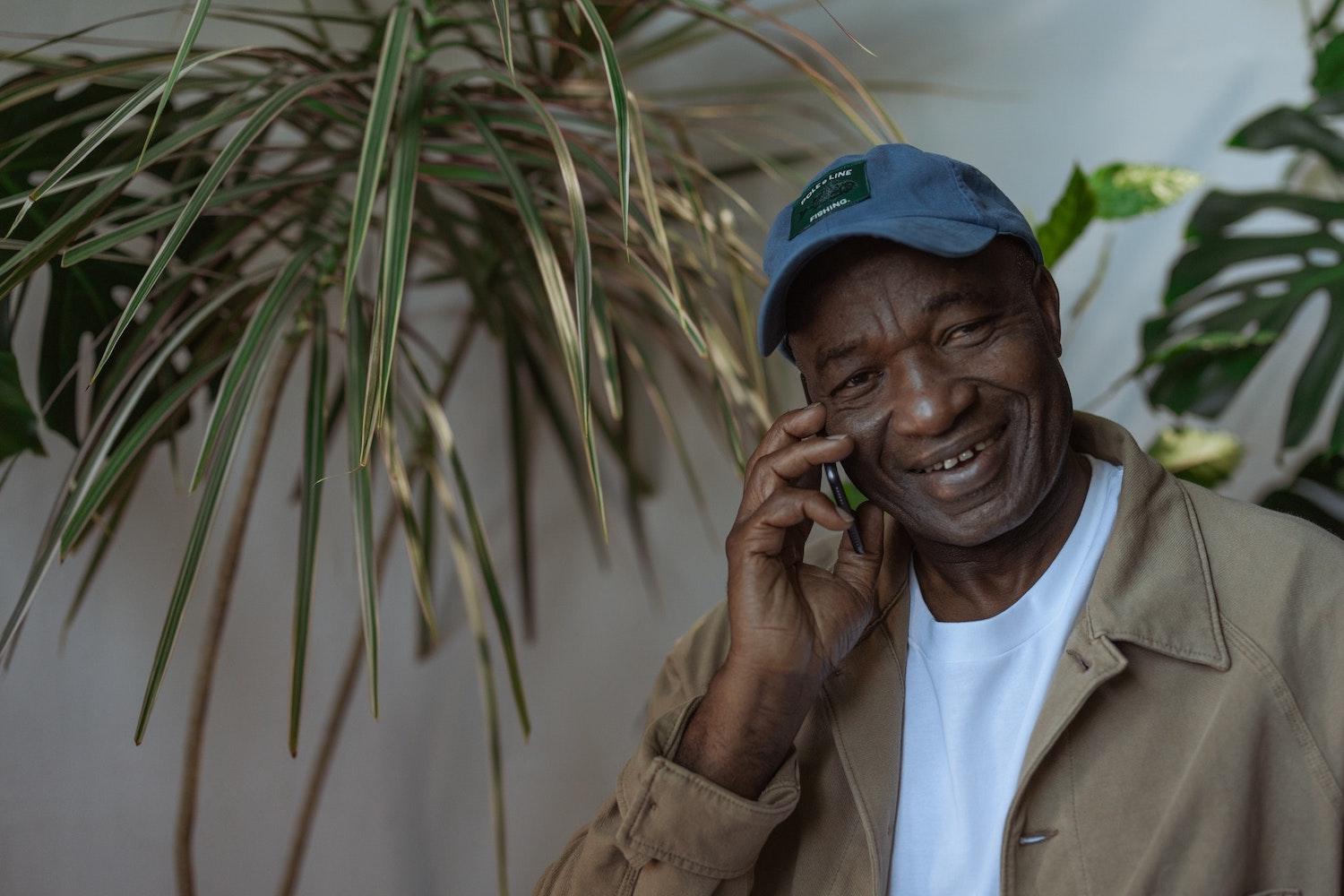

Wellness calls to local seniors is just one way the Chicago nonprofit M3 engaged virtual volunteers to keep on serving neighbors amidst the pandemic.
When My Block, My Hood, My City (M3) faced the challenges of lockdown early in the pandemic, the Chicago nonprofit had to pivot from its regular in-person activities. M3 is known for bringing together hundreds of volunteers to make tangible differences in marginalized communities. Social distancing is not exactly conducive to that work. Like many organizations, M3 remained responsive to community needs and began exploring virtual options. The programs that resulted not only kept the organization connected to its work, but also helped corporate volunteers continue to engage in meaningful service.
As M3 weighed options, Chief Operating Officer Cynthia Alfaro shared an idea with CEO and founder Jahmal Cole. “We can call people, because everybody’s stuck at home, and I know people want to do something,” she recalled to TriplePundit. The group started making wellness calls to seniors, noting any needs M3 could fulfill. The multinational consumer goods company Mars was one of the first corporations to reach out about supporting M3’s effort. What followed was a unique partnership that helped to keep people connected and communities served during a time of uncertainty and isolation.
Wellness calls become a simple but effective outreach tool for this Chicago nonprofit
Wellness calls were a standard way M3 kept in touch with senior neighbors during a time of high need. Before the pandemic, M3 focused on shoveling their sidewalks in the winter or ensuring they had water or a fan in the summer. Volunteers also took simple actions — beautifying parks, cleaning up neighborhoods and introducing young people to new experiences. Phone calls fit M3’s style of taking simple steps to reach a high goal. Alfaro said nobody wanted to fund M3 at first because they thought its approach was too simple. “People expect … that they are going to reform the whole system. People are looking for these complex solutions, and really sometimes it’s right in front of your face,” she said.
M3 already had a starting point for the wellness call program through its vast networks in the south and west sides of the city, Alfaro said. Even so, it put out a call on social media and in newsletters for more contacts and received thousands of phone numbers.
As volunteers checked in with seniors, they were alerted to food and wellness needs, as well as hurdles to accessing resources. After one recent wellness call, M3 was able to deliver urgent groceries within hours of hanging up. The woman on the other end of the call expressed tears of gratitude.
For corporate partners, volunteering pays off
During a year of increased awareness of social inequities, M3 was flooded with volunteers looking to lend a hand, though those volunteer numbers rise and fall, Alfaro noted. Corporate partnerships, on the other hand, provide a sense of stability. “It is good to have a solid partnership that is with us throughout the season,” she said.
Wellness calls weren’t a fit for every corporate partner, but many appreciated being able to continue their service work virtually. “On the corporate side, I think it was very fulfilling to be able to still connect with people and connect to people who feel isolated, who are in high-need populations,” she told us.
A steadfast relationship benefits nonprofit and company alike. Corporate volunteering has been found to improve employee engagement, job satisfaction, retention and more. To make an actual difference in company culture, though, the volunteering needs to be meaningful, Beth Bengtson, CEO and founder of Working for Women, which connects businesses to nonprofits working on women's empowerment, wrote for the Harvard Business Review. Speaking of fundraising and one-time events, she writes, “These ‘one-and-done’ experiences are not always in alignment with the company’s purpose and goals, and don’t deliver lasting impact for the companies, their employees, or the nonprofits.”
A solid corporate partnership brings stability and growth
Mars was one of the first companies to reach out about supporting M3 beyond writing a check, Alfaro said. “In this world, traditionally, it’s a one-sided conversation,” she told us, speaking to the tendency of companies to reach out with money, but avoid engaging with a nonprofit.
Beginning its relationship with M3 in 2020, the approach of the Mars Wrigley Foundation, with their global headquarters in Chicago, was to open a continuing conversation about the nonprofit’s needs. In addition to virtual volunteering through wellness calls, Mars Wrigley helped M3 set up holiday lights on Martin Luther King Drive in the South Side of Chicago last year. “Again, something really simple as putting up holiday lights … can really make a big impact,” Alfaro said.
“My goal is to build meaningful partnerships that leverage all of our assets. Through the Mars Wrigley Foundation we provide funding that enables community-based organizations like M3 to drive positive change and build stronger communities,” said Anne Vela-Wagner, executive director of the Mars Wrigley Foundation.
“Through the talent and caring of our incredible Associates we have conducted wellness calls for seniors, held virtual career exploration sessions with teens, and through our skills-based Mars Ambassador Program, we will have an Associate working full-time, over the course of a month, with M3’s team to strengthen their stakeholder engagement strategy,” she continued. "We’re also planning a ‘pack the van’ event in the fall to fill the first-ever M3 van with supplies in high-demand for those they serve,” A recent grant from the Foundation provided the funding for the van which allows M3 to increase its capacity and expand its impact. “True partnerships are multi-faceted and collaborative,” Wagner said. "I’m constantly exploring what’s needed and how we can maximize our impact.” .
Corporate expertise uplifts an industry
This year Mars was also able to give beyond the check with Nashville Humane Association (NHA), a 10-year partner.
Limiting human interaction proved to be a major challenge for animal shelters like NHA last year. “Our core programs rely on in-person interactions,” Laura Baker, executive director of NHA, told TriplePundit. “How do you adopt an animal when the human cannot safely meet it? How do you get animals into foster care without coming into contact with the foster? How do we protect the humans involved while also saving as many animal lives as possible?”
One of the tangible developments from Mars Petcare’s collaboration with NHA was assisting the nonprofit with Dogs on Zoom, a virtual pet adoption campaign from Mars brand Pedigree. “The animal welfare community is not known to be super tech heavy, but 2020 forced us to be! Mars [Petcare] helped provide and train us on how to function in a digital world,” Baker said.

Dogs on Zoom helped NHA overcome the hurdle of introducing animals to the public, and Baker emphasized the importance of future pet parents finally meeting animals from the safety and comfort of their homes. NHA received 2,000 adoption inquiries, and all its featured dogs had multiple adoption applications by the end of the program.
Perhaps the best that virtual corporate volunteering did for nonprofits in 2020 was create a sense of consistency and help expand programs and reach. For their part, Chavarria says NHA found some permanent changes and growth last year. “2020 forced us to look at things differently, and I am happy to say that we are continuing some of those changes even in 2021,” she said. “That is definitely one huge silver lining to the pandemic.”
This article series is sponsored by Mars and produced by the TriplePundit editorial team.
Image credits: Pexels/Ron Lach, Pexels/Rondale Productions and Pedigree
On Monterey Bay, World’s Largest Energy Storage System Just Got Larger


California’s Monterey Bay is known for several things: a world class aquarium, breathtaking scenery dominated by cypress trees and cliffs and if chardonnay is your thing, the grapes here have a sterling reputation. Now, along the center of the bay’s coastline, the tiny community of Moss Landing (pictured above) is known for hosting what its builders say is the world’s largest energy storage system in the world.
And another phase of construction has made this facility even larger.
As announced last week, Vistra’s Moss Landing Energy Storage Facility switched on a 100-megawatt expansion, which brings the facility’s total capacity to 400 megawatts, or 1,600 megawatt-hours. Since it launched in July 2020, the battery system stores power and releases it when needed to California’s power grid.
The energy storage facility, a partnership between Vistra and the utility PG&E, uses technology developed by LG Energy Solution. This array of lithium-ion batteries is located on the site of a power plant in Moss Landing that has generated electricity for more than 70 years. Vistra also worked with the engineering firm Burns & McDonnell during this expansion. As of now, the current plan is for Vistra and PG&E to operate the plant jointly for another 10 years.
The Moss Landing expansion builds upon additional clean technology investments Vistra has recently made. Last year the company announced it would invest about $5 billion by 2030 in renewables and battery energy storage. That sum includes close to $1 billion of development projects underway that the company says will help the company shift more of its portfolio toward facilities generating renewable power.
California will need more projects like this if it is to meet its long-term climate action goals. The state seeks to have renewables generate half of its power supply by 2030. The Golden State also is determined to have emissions fall below 80 percent of 1990 levels by mid-century.
Image credit: Gabriel Barranco/Unsplash
Not an Oxymoron: Fossil Fuel-Free Steel Is Here


It doesn’t take much intuition to sort out that the manufacturing of steel is carbon-intensive. The reality is also that steel provides much of the backbone that makes our daily lives possible, from home to work and getting just about anywhere in between or far away.
The global steel industry recognizes that it has its part to play if the world will ever fully transition to a low-carbon economy; consultancies such as McKinsey has said the sector had better get moving if steel producers don’t want to see a good portion of their assets vulnerable to risks in the near future.
Considering the recent news coming from the IPCC and the general agreement that climate change is occurring faster than we had thought just a few years ago, time is of the essence. And with most estimates agreeing that global steel production accounts for about 7 percent of the world’s total emissions, the industry can certainly make a difference with new investments allowing for the use of next-generation fuels. That is, of course, if they can scale up.
One Swedish company says it’s already embarking on such a path.
Earlier this week, the Stockholm-based steel producer SSAB announced it had delivered its first batch of steel that is made completely without burning coal or coke. Instead, the company was able to produce this material for Volvo by using its own proprietary technology, which runs on energy that is 100 percent fossil fuel-free, i.e. “green hydrogen.”

SSAB and Volvo first revealed this partnership back in April. Should the companies’ partnership continue as planned, the automaker will build some concept cars with the low-carbon steel this year. Smaller-scale production will launch in 2022, and assuming SSAB will be able to accelerate the production of its steel using green hydrogen, commercial-level manufacturing could start in 2026.
As TriplePundit has long reported, hydrogen is crucial to the global economy, as it is used for countless products, from food processing to manufacturing pharmaceuticals. Hydrogen is also easily transported by sea, rail or pipelines. The problem is that ample reserves of hydrogen do not exist in nature, so it must be extracted from another source, which usually is natural gas.
But if hydrogen can be extracted cost-effectively from water through a process called electrolysis, which applies an electrical current to unleash bubbles of hydrogen – and if that can be so with renewable energy sources such as solar and wind resources, therein lies a game-changer. That scenario would be especially true of the automotive sector – and a few such companies are already taking notice. Much of this talk has revolved around what would power next-generation cars, as in fuel cells versus all-electric drive trains versus the internal combustion engine.
Volvo’s investment, in contrast, is focused on the materials needed to manufacture the cars in itself; and if Sweden’s iconic automaker and SSAB can figure this out, then other companies beyond the automotive sector can solve the puzzle long challenging the global business community – how to clean up those massive, complicated and polluting supply chains.
Image credits: SSAB
Most of Us Aren’t Saving Lives. Company-Wide Time Off Would Allow Employees to Reset Theirs


To say these are trying times for most people is a cruel understatement. We know the facts. Despite being marooned in the home office, few people have taken much time off. Many workers are now sorting out a return to the office, hybrid or full-time. Others are facing that reality while kids are, or may return, to school depending on how badly the Delta variant spreads. Then there’s the prospect of elderly family members, many of whom have been isolated for months and need help, or at least companionship, more than ever.
The situation many of us face at this time of sums up what most of us have felt the past 18 months. The one-again, off-again good and bad news surrounding COVID-19 and other festering social problems have left many of us feeling like Charlie Brown after Lucy pulled the football: only Charlie Brown ended up flat on his back with a bruised ego, not in a viral video or worse, in an ICU ward.
Fasten your seat belts, human resources people: Employee engagement, and of course the notion of what time off means, are being redefined, and being done so quickly.
There’s no question that many employees are feeling burnout in varying degrees. The advice is endless: stop having virtual happy hours, as no one likes going anyway; reduce the frequency of Zoom meetings; pay employees to take time off for vacation; don’t be a snitch and monitor whether or not your colleagues are on Slack; encourage people to capitalize on their mental health benefits, or just pay for it if healthcare plans offer miserly benefits; front the cost of virtual experiences (that aren’t Zoom happy hours).
But there is another idea, which some companies have tested out already. As one email from an organization that landed in TriplePundit’s inbox yesterday announced:
“…Over the past year, we made new investments in breakthrough organizations that ensure wellbeing in education, launched major initiatives to reskill workers for the future, and supported entrepreneurs and ecosystem actors working to repair and strengthen our democracy,” wrote the author of the organization’s email. “To continue moving this work forward powerfully, [we have] decided to take a moment to rest and reset. Our team will be stepping away from the inbox, turning off the webcam, and closing the laptop.”
That organization is completely shutting down from August 30 to September 8; everyone is taking time off. Everyone.
For many companies that are publicly owned, or have a rigorous sales cycle – among countless other factors – completely shutting down for a several days comes across as being a few pieces of fruit more than completely bananas. The idea of company wide time off, however, isn’t completely new: many big tech companies a generation ago used to shut down entirely around the Christmas and New Year’s holiday, but that was a cost-saving measure, and many employees were dinged vacation time.
Editor's note: Be sure to subscribe to our Brands Taking Stands newsletter, which comes out every Wednesday.
But some companies have realized the benefits of a complete break for everyone. LinkedIn did so this April. Bristol-Myers Squibb reported gave everyone worldwide two days off for rest. Other companies are going even further, by trusting their employees with unlimited leave.
As Erica Pandly of Axios wrote, “A growing number of firms are giving employees the same day or week off — separate from allotted personal vacation time — and finding that it's a lot easier for workers to unplug if their managers and peers are doing it at the same time.”
The reality is that most of us not working in emergency healthcare, or within a function where peoples’ lives literally depending on the hands or brains of others.
Executives horrified at the thought of such a plan, even for a day, may want to do it for other reasons. Those could include the burnishing of their companies’ reputations or something just about all communications professionals and executives crave: earned media.
Think of how a retailer could cement trust with employees by shutting down all stores, or several in rotation at a time for a day, allowing everyone to chill out or do those errands that have been piling up. Office employees might like the occasional weekday off to do those Costco runs or have a day at the beach or park without those weekend crowds. And again, more people would be able to take a complete, much-needed mental break knowing that they don’t have to feel as if they should check in with their peers or managers.
The stubborn fact is that the vast majority of us aren’t saving lives. Nevertheless, many of us, and others around us, feel as if their lives are at a tipping point. And from a numbers perspective, the costs of shutting down for a few days or a week could very well reduce the price of recruitment, and any perceived inefficiency resulting from employees who quite frankly, and justifiably, feel overwhelmed.
Image credit: Tabitha Turner/Unsplash
Five Ways You Can Support Those in Need in Afghanistan
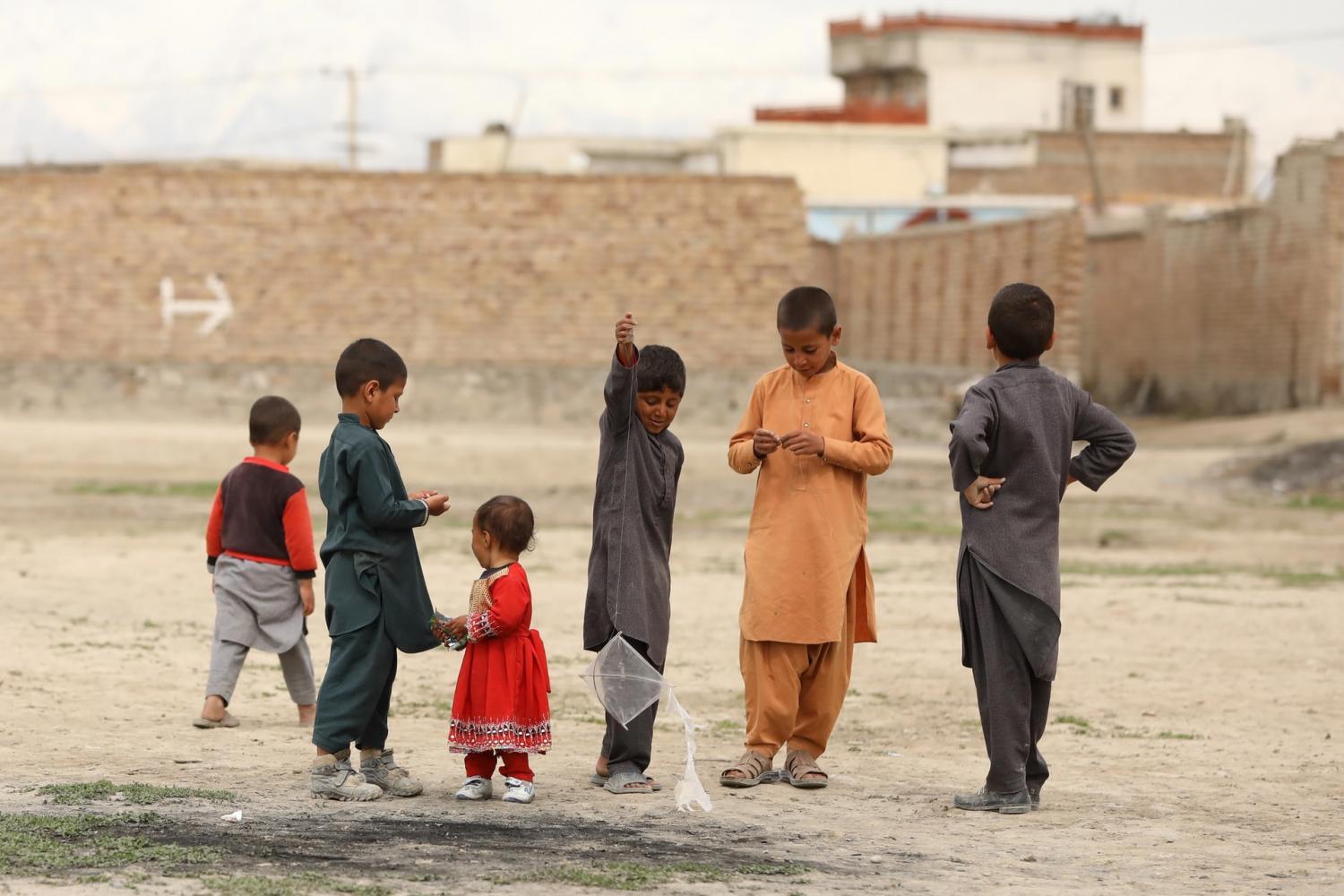

By Khanyi Mlaba
The scenes of thousands of Afghans desperately pleading for assistance and running for refuge as the Taliban solidified rule over Afghanistan for the first time since 2001 have been broadcast across the world and left it reeling.
As the news broke it wasn’t long before the country’s most famous human rights’ advocate, Malala Yousafzai took to social media to raise concern over the occupation of the Taliban, knowing all too well what the group’s rule could mean for women and girls.
“We watch in complete shock as Taliban takes control of Afghanistan,” she said on Twitter. “I am deeply worried about women, minorities and human rights advocates. Global, regional and local powers must call for an immediate ceasefire, provide urgent humanitarian aid and protect refugees and civilians,” she said.
The Taliban takeover came after international forces withdrew from Afghanistan, with the United States officially beginning to withdraw in May 2021. The militant group has since taken over the country city by city, eventually occupying the capital Kabul on Sunday. Afghanistan’s leadership, namely President Ashraf Ghan, had fled the country and millions of Afghans are seeking asylum.
The Taliban — who first assumed control of Afghanistan’s capital of Kabul in 1996, are now enforcing their interpretation of Islamic Law and implementing strict regulations that hindered the humanitarian rights of vulnerable communities — have claimed that they are interested in an inclusive government, a peaceful takeover and writing laws that will take into consideration women’s rights.
However there have already been reports of restrictive conditions on women, and women being forced to stop working by the militant group, begging the question of whether the Taliban will do as they said and uphold certain rights for women, or whether women’s rights are in severe danger.
Women and girls are the most vulnerable now that the Taliban have taken hold of Afghanistan. Before they lost their rule over the country in 2001, the Taliban had implemented strict laws on women’s rights. Women had to cover their faces and bodies, they were not allowed to work, girls could not go to school, and if a woman needed to leave her house, she should’ve been accompanied by a male relative.
For two decades Afghanistan worked towards gains for women’s rights, including access to education and the ability to work. However there is growing fear that these gains will be entirely reversed with the recent rule of the Taliban.
Speaking to NPR, Rangina Hamidi, Afghanistan's acting education raised concerns for the future of the rights of girls and women in the country.
"There is a lot of fear among girls and women," she told NPR. "I have had many messages from my female family, friends calling me, asking me what I know and what they should expect. And I wish I had an answer for them.
Read the full blog on the Global Citizen website
Previously published in the 3BL Media newsroom.